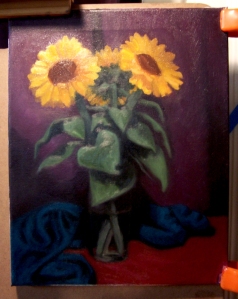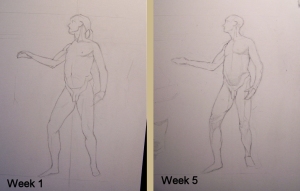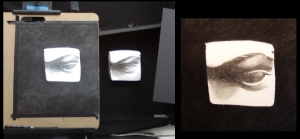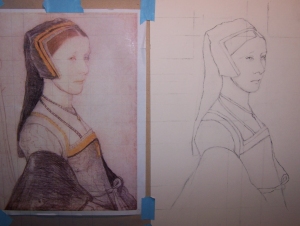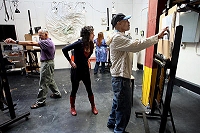It’s time to re-arrange the furniture a little bit so to speak. This blog was started when I began studying at a local atelier run by my teachers and friends Lisa Silas and Matthew Riggs. After many years of trying to meet the standards of expression I saw in artists of the past and select few current artists, I went into the study of classical realism full tilt boogie. I almost too easily left behind a budding career in non-representational work that had never really satisfied me. I learned to do things at the atelier that I never, ever thought I could do – like really draw for the first time in my artistic journey. I was just beginning to learn the classical traditions of oil painting as passed down from a long tradition of artists through the Florence Academy School of Art in Italy where Lisa and Matthew studied and graduated from. And then I got sick. I couldn’t make it to the studio anymore and I couldn’t stand at the easel to work anymore. At home, I worked very hard, all the time, pushing the skills I learned and practicing, practicing, practicing. Lisa and Matthew knew how much I loved the form and how hard I worked. As friends, they came to me at my home studio and coached me as best they could from there. At that time, I also began studying at home with Sadie Valerie at her online atelier. Again, I was just starting to get into the oil painting section of her instruction when my illness took a bad turn. I was told I could no longer work in oils or pastels, the two mediums that were core to my study and my artistic expression. This pretty much bummed me out for a little while – but I still had graphite. I remembered my artistic journey began with watercolor, but I had completely abandoned it for the feel and look of the oils. I had very little love for watercolor and found it cumbersome and ornery. But I have to paint.
And this is where my new and improved blog finds me. I am continuing to push my classical drawing practice. I do regular practice of Bargue and Masters copies in graphite. I also do figure work using my (clothed) friends and often photos of nude models (I cannot afford a personal life model at my home). I also do value studies, anatomy studies and still life drawings in graphite. Drawing is the root of my practice. Lisa comes over when she can to coach me and give me crits on my copies and Bargues. Lately, she has been encouraging the development of my personal expression and point of view. I paint almost every day in watercolors. My art practice is my meaning and what drives me, along with my writing which I will talk a little about in another post.
So – wow, watercolor. I am actually finding that I enjoy the cranky things. There is a playfulness and humor to them that had been lost on me. I had judged them too harshly, too soon. The water has many things to teach a person and the medium helps me get my Zen on more than the oils really did. They are also my only option – so I am grateful to have them!
Here are a few of the watercolor I have completed up to now and a Master copy I just finished. I have lots of thoughts to share about art and life, and the union of the two but for now just pictures, because I could type forever… but I bet you don’t want to read that long!!







































